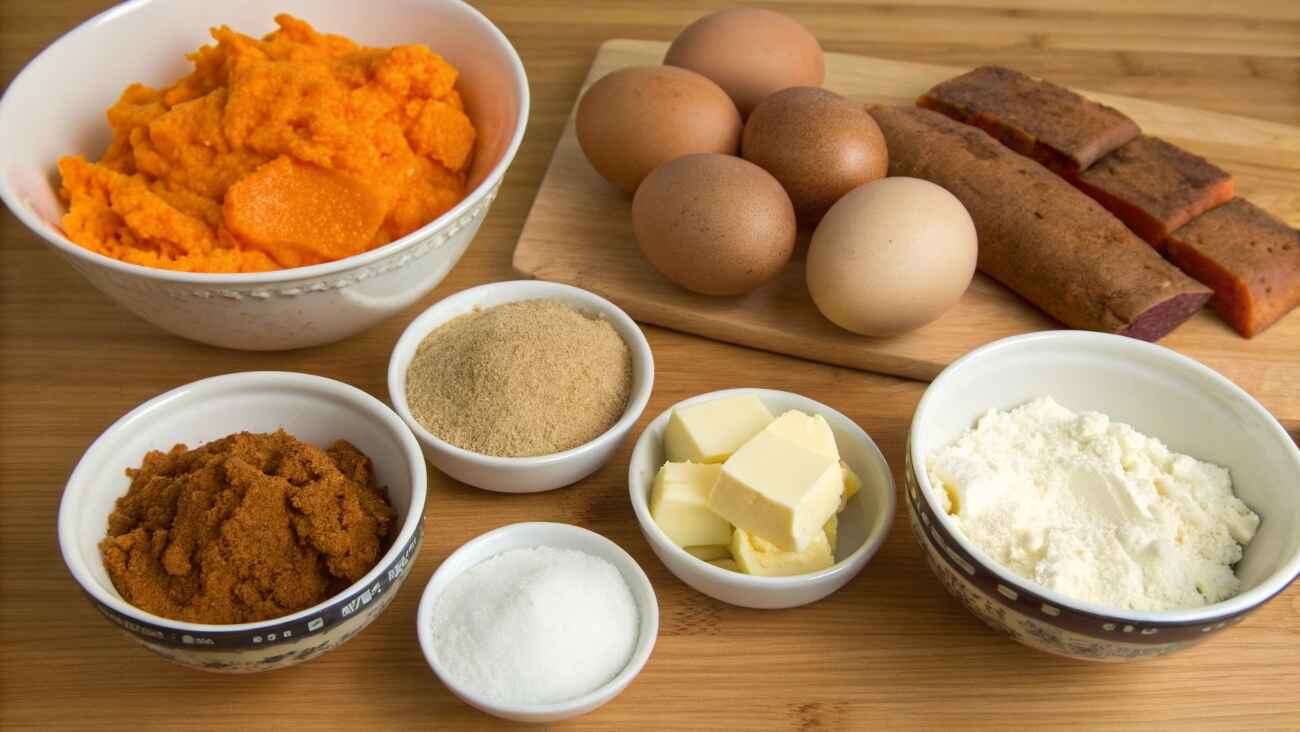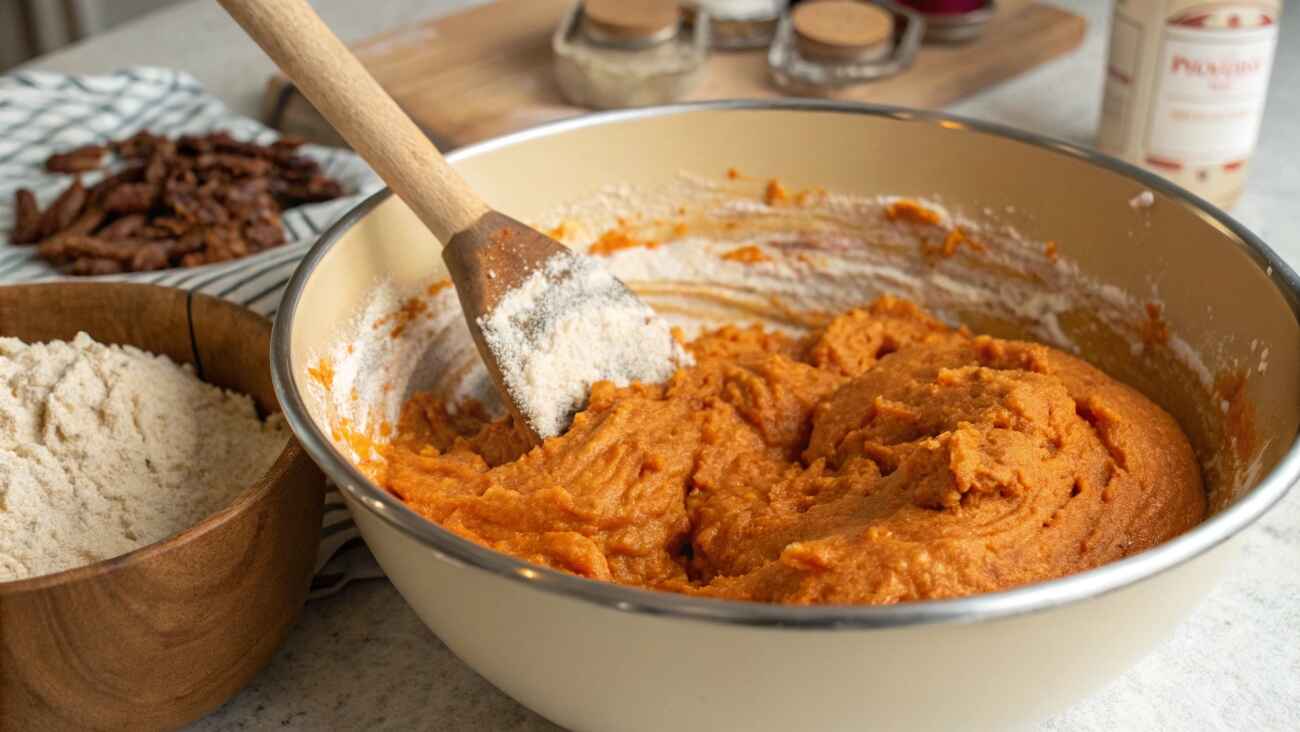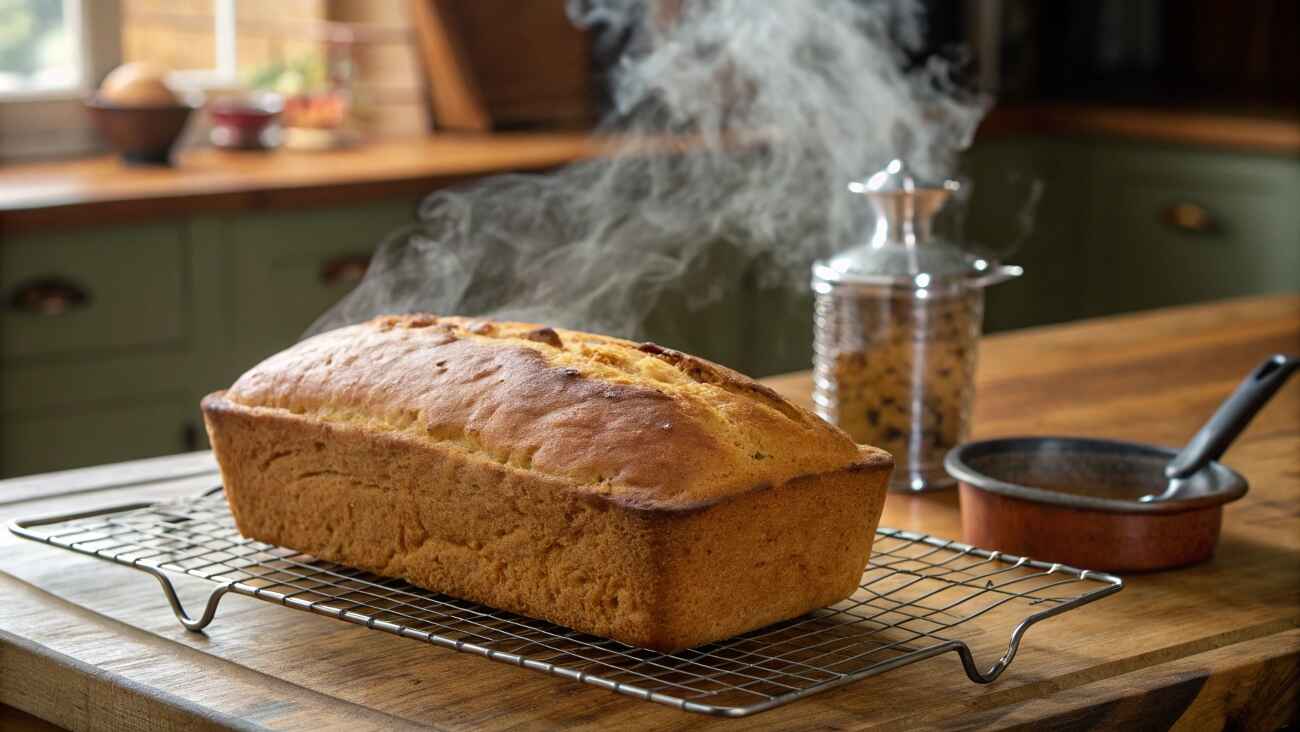When was the last time you bit into something that felt like a warm hug for your taste buds? That’s what sweet potato bread is all about! This delectable treat isn’t just tasty—it’s packed with nutrients, easy to customize, and perfect for any occasion. Whether you’re a seasoned baker or a newbie in the kitchen, sweet potato bread offers something for everyone. Let’s dive into this golden loaf of joy and see why it deserves a permanent place on your table.
Table of Contents
What is Sweet Potato Bread?
What is Sweet Potato Bread?
Sweet potato bread is a delightful combination of flavor and nutrition. If you’re curious about sweet potatoes themselves, learn more about sweet potatoes and their uses in cooking in our detailed guide.
Origins and History of Sweet Potato Bread
Did you know sweet potatoes have been loved for centuries? Native to Central and South America, sweet potatoes have been a dietary staple for thousands of years. Over time, creative cooks began incorporating them into baked goods, resulting in recipes like sweet potato pie and, eventually, sweet potato bread. Today, it’s a favorite in Southern cooking and beyond. People love its ability to be both a savory or sweet dish, depending on how you make it.
“Sweet potato bread has its roots in Southern hospitality—a loaf of love shared with friends and family.”
Ingredients Needed for Sweet Potato Bread
Baking sweet potato bread doesn’t require a grocery cart full of items. Most of the ingredients are pantry staples, which means you can whip it up whenever the craving strikes.
Choosing the Perfect Sweet Potatoes
The quality of your sweet potatoes can make or break your bread. Aim for fresh, firm sweet potatoes with no blemishes or bruises. Varieties like orange-fleshed sweet potatoes are particularly good because they add natural sweetness and vibrant color to your loaf.
“Tip: Roasting sweet potatoes before using them enhances their natural sweetness and caramelizes their flavors.”
Essential Baking Ingredients and Substitutions
Aside from sweet potatoes, you’ll need flour, eggs, sugar, and butter or oil. Want to make it healthier? Swap white flour for whole wheat, and replace sugar with honey or maple syrup. For vegans, flax eggs and coconut oil work wonderfully.
- Flour: All-purpose flour works well, but whole wheat flour can add a nutty flavor and extra fiber.
- Sweetener: While sugar is traditional, you can experiment with brown sugar, honey, or agave syrup.
- Spices: Cinnamon, nutmeg, and ginger bring out the cozy, warm flavors. Don’t be afraid to adjust the quantities to match your taste!
How to Make Bread
Baking sweet potato bread is simple and rewarding, even for beginners. If you’re new to the world of baking, check out our guide on baking bread for beginners to build your confidence in the kitchen.
Step-by-Step Guide
- Prepare the Sweet Potatoes: Start by roasting or boiling sweet potatoes until tender. Peel the skin and mash them into a smooth puree.
- Mix the Dry Ingredients: In one bowl, whisk together flour, baking soda, salt, and spices like cinnamon.
- Blend the Wet Ingredients: In another bowl, mix mashed sweet potatoes, eggs, sugar, oil, and a splash of vanilla.
- Combine Everything: Gradually fold the dry ingredients into the wet mixture. Be gentle—overmixing can make the bread dense.
- Pour and Bake: Transfer the batter into a greased loaf pan and bake at 350°F (175°C) for about 50-60 minutes.
“The smell wafting through your kitchen as it bakes? Absolute heaven!”

Common Mistakes to Avoid While Baking
- Using Raw Sweet Potatoes: Raw chunks won’t blend well and can ruin the texture.
- Overmixing the Batter: This can make your bread tough instead of soft and fluffy.
- Not Testing for Doneness: Always insert a toothpick into the center—if it comes out clean, your bread is ready.
Popular Variations
Whether you’re looking for vegan, gluten-free, or spiced variations, sweet potato bread is highly adaptable. Try our gluten-free sweet potato recipes for more ideas and discover creative ways to incorporate this versatile ingredient.
Gluten-Free
Want to make it gluten-free? Substitute all-purpose flour with almond or coconut flour. These options add a nutty flavor that complements the sweetness of the bread.
Vegan
No eggs? No problem! Use mashed bananas or unsweetened applesauce as a substitute. Pair this with plant-based milk like almond or oat milk for a dairy-free delight.
With Spices and Add-Ins
Feeling adventurous? Add a handful of chopped nuts, raisins, or chocolate chips. Want a holiday twist? Throw in some cranberries and a dash of ginger.

Tips for Perfectly Moist
Nobody likes dry bread! Follow these tips to ensure your sweet potato bread turns out moist and delicious. You can also explore our tips for baking moist and fluffy cakes for more ideas to perfect your baked goods.
Secrets to Retaining Moisture While Baking
- Use Fresh Sweet Potatoes: Roasting sweet potatoes instead of boiling locks in flavor and moisture. Boiling can make them watery, diluting their richness.
- Incorporate the Right Fats: Oil and butter are key players here. They coat the flour and keep the bread soft and tender. If you’re looking for a healthier option, avocado oil works wonders.
- Don’t Skimp on Wet Ingredients: Whether it’s mashed sweet potatoes, yogurt, or applesauce, these keep your bread from drying out.
“Moisture is all about balance—too much and it’s soggy, too little and it’s a biscuit. Aim for the sweet spot!”

Storage and Reheating Tips
Once your bread is baked to perfection, proper storage ensures it stays moist and delicious:
- Wrap It Up: Store your bread in plastic wrap or aluminum foil to lock in freshness.
- Room Temperature is Best: Avoid the fridge unless you’re in a hot, humid area—it can dry out the bread.
- Freeze Smart: For long-term storage, freeze individual slices. Reheat them in the oven or microwave, wrapped in a damp paper towel, for that freshly baked feel.
Around the World
Sweet potato bread takes on unique twists across cultures. In Japan, sweet potatoes are used in fluffy buns glazed with honey, while in the Caribbean, dense spiced sweet potato bread reigns supreme. Discover more cultural uses of sweet potatoes in cooking and their global impact on culinary traditions.
How Cultures Incorporate Sweet Potatoes in Breadmaking
In the Caribbean, sweet potatoes are used in dense, spiced bread that’s perfect for holidays. In Asian countries, sweet potato buns are a popular street food, often filled with creamy or savory centers. The adaptability of sweet potatoes makes them a favorite ingredient worldwide.
Unique Regional Twists
- Southern U.S.: Spiced and loaded with pecans or raisins, this version is a holiday favorite.
- Japan: Sweet potato bread is often shaped into small, fluffy rolls and sometimes glazed with honey.
- West Africa: Sweet potato bread is made with cassava or yam flour for a unique texture.
“It’s amazing how one ingredient can connect so many cultures, isn’t it?”
Why Sweet Potato Bread Deserves a Spot on Your Table
Sweet potato bread is a wholesome, versatile option for any meal or occasion. Whether you’re looking for a healthy snack or a comfort food fix, its combination of flavor and nutrients is unbeatable. Try exploring other healthy homemade bread recipes to add variety to your baking repertoire.
Why should you bake it?
- It’s healthy without feeling like “health food.”
- It’s customizable—sweet, savory, spicy, or plain.
- It’s simple enough for beginners but satisfying for seasoned bakers.
“Sweet potato bread is more than a loaf—it’s a labor of love. Once you bake it, you’ll never go back.”
Frequently Asked Questions About Sweet Potato Bread
How do I make sweet potato bread moist and soft?
To achieve a moist and soft texture, use mashed sweet potatoes, a good amount of butter or oil, and do not overmix the batter. Adding a little sour cream or yogurt can also enhance the moisture.
Can I use canned sweet potatoes instead of fresh ones?
Yes, canned sweet potatoes can be used as long as they are not overly sweetened. Drain any excess syrup and mash them before adding to the batter.
How do I store sweet potato bread?
Store sweet potato bread in an airtight container at room temperature for up to 3 days. For longer storage, refrigerate it for up to a week or freeze it for up to 3 months.
Can I make sweet potato bread gluten-free?
Yes! Substitute all-purpose flour with a gluten-free flour blend. Make sure to add a binder like xanthan gum if your flour mix doesn’t already contain it.
What spices go best with sweet potato bread?
Cinnamon, nutmeg, ginger, and cloves complement the natural sweetness of sweet potatoes and add warmth to the flavor profile.
Can I add nuts or chocolate chips to sweet potato bread?
Absolutely! Chopped pecans, walnuts, or chocolate chips can be added to the batter for extra texture and flavor.
Conclusion
Sweet potato bread is a delicious and wholesome treat that combines the natural sweetness of sweet potatoes with warm spices and a soft, moist texture. Whether enjoyed as a breakfast, snack, or dessert, it’s a versatile recipe that can be customized to suit different tastes and dietary needs. With simple ingredients and easy preparation, homemade sweet potato bread is a perfect way to incorporate nutrient-rich sweet potatoes into your diet. Give it a try and enjoy every bite of this flavorful, comforting bread! 🍞✨

